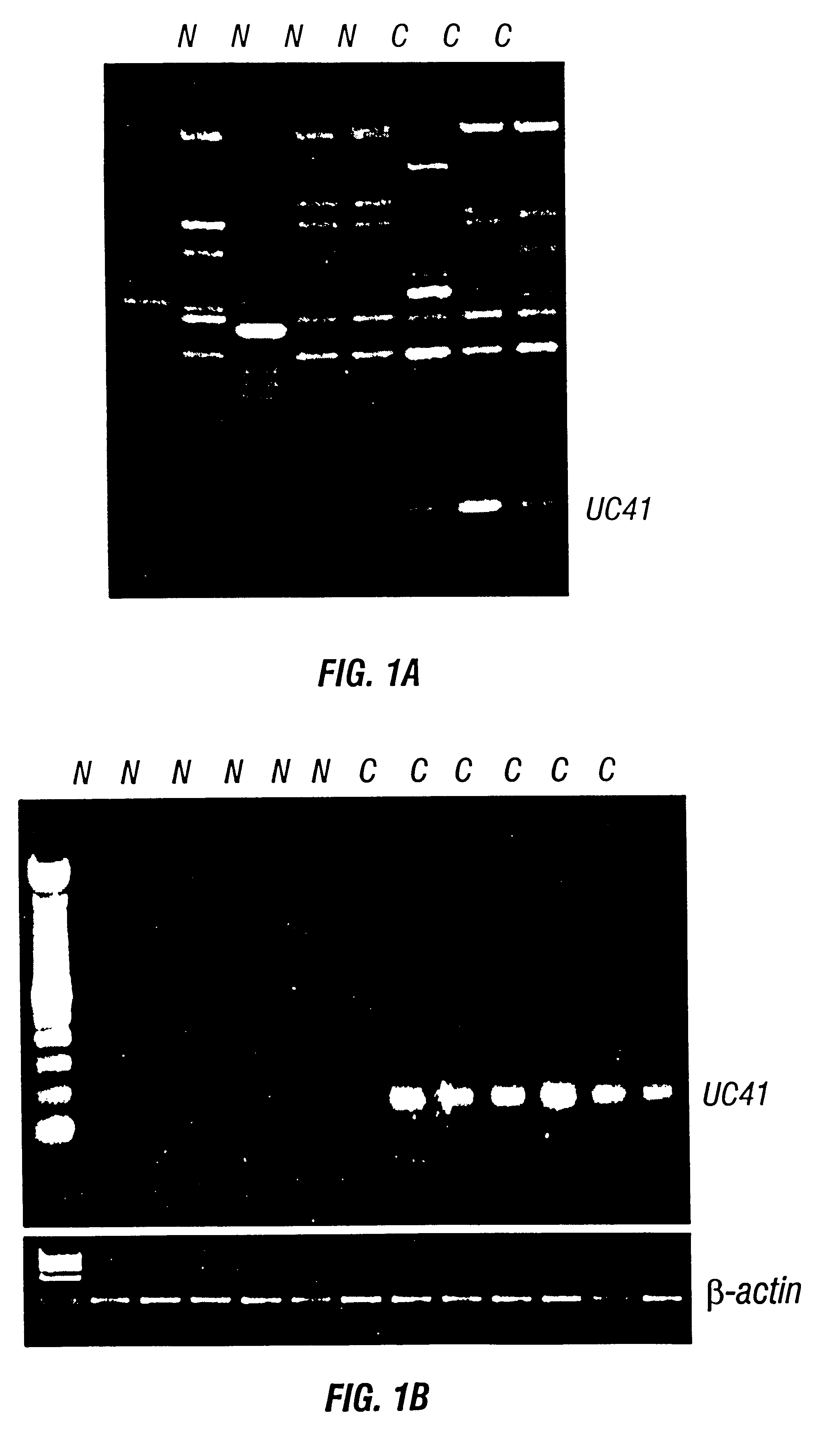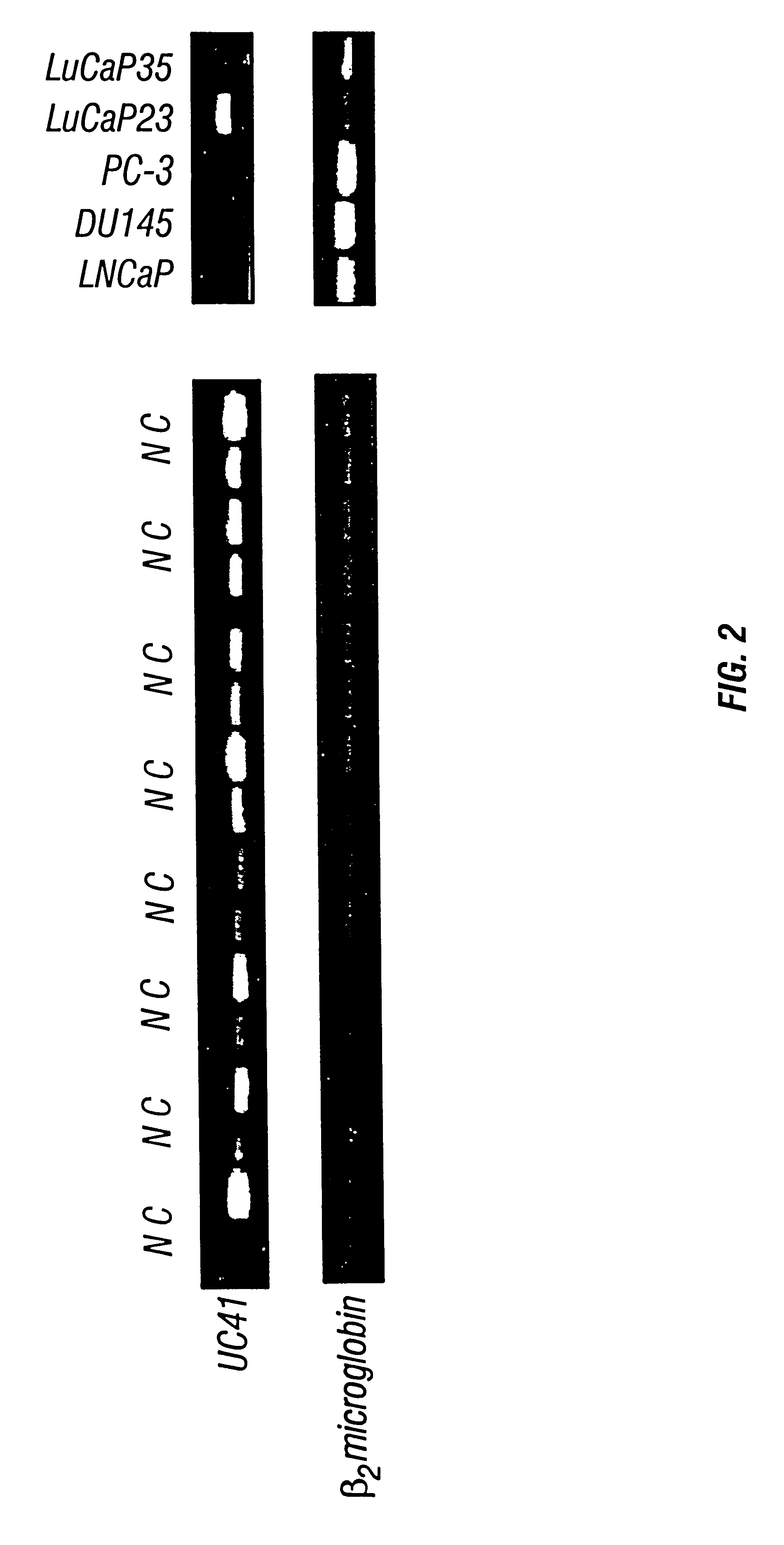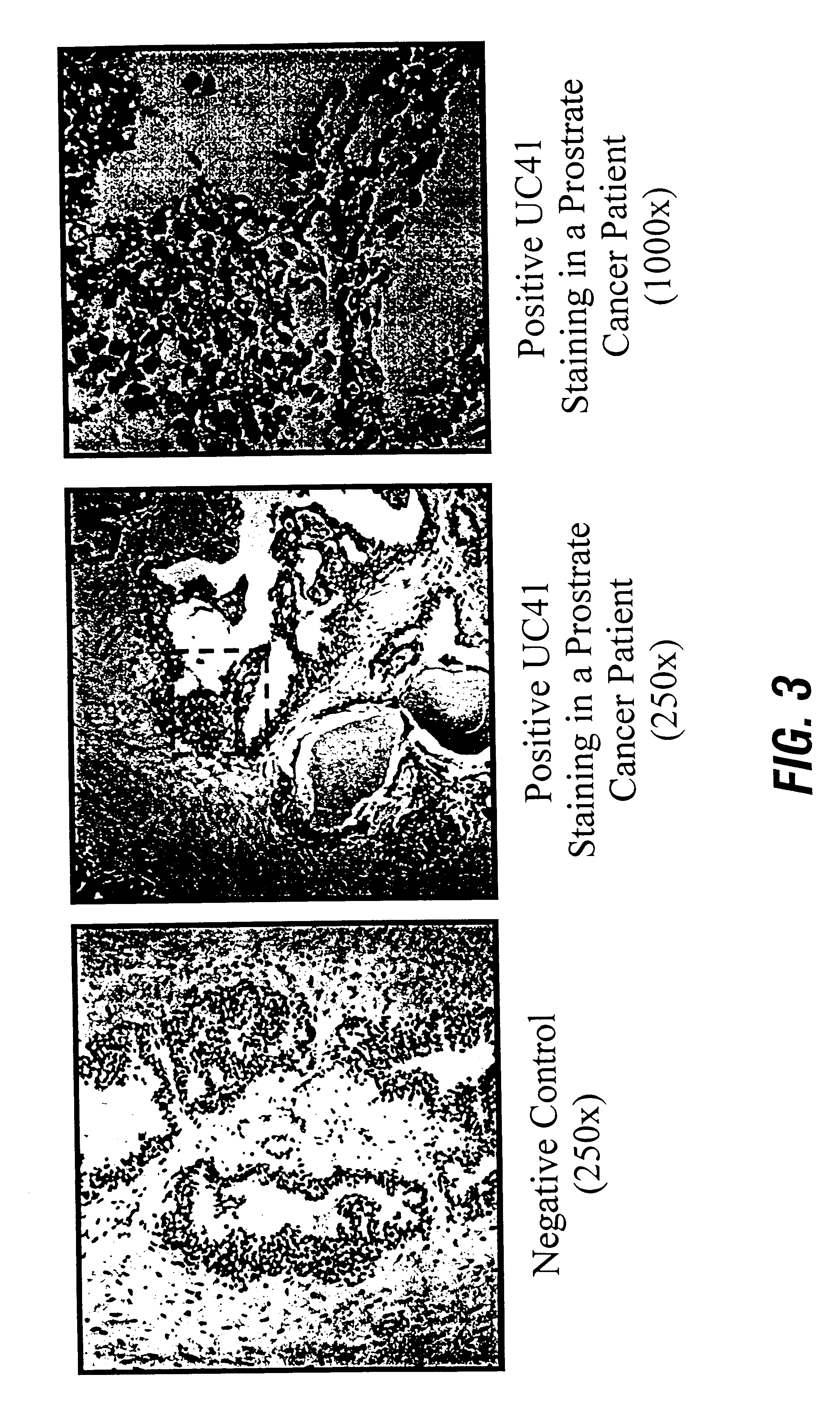Prostate-specific gene for diagnosis, prognosis and management of prostate cancer
- Summary
- Abstract
- Description
- Claims
- Application Information
AI Technical Summary
Benefits of technology
Problems solved by technology
Method used
Image
Examples
example 1
5.2 Example 1
Identification of UC41 as an Overexpressed Gene in Prostate Cancer by Differential Display
A modified agarose gel-based mRNA differential display method was used to identify genes differentially expressed in prostate cancer tissue. UC41 was identified as a gene that was very significantly up-regulated in prostate cancer. As shown in FIG. 1 (panel A), a strong band (UC41) was seen in all three prostate cancer tissues used for the differential display study, while UC41 band intensity was very low all four normal tissues tested.
The UC41 band was excised, purified and cloned directly into the pGEM-T plasmid by TA cloning. The UC41 cDNA clone was sequenced by standard techniques as described above. The resulting 183 bp EST fragment of UC41 (identified as SEQ ID NO:23 in U.S. patent application Ser. No. 081692,787 the entire text of which is incorporated herein by reference) corresponds to bases 1323-1500 of SEQ ID NO:1.
Using this sequence data, forward and reverse primers for...
example 2
5.3 Example 2
Isolation of a Full Length cDNA Clone of UC41
The 183 bp UC41 fragment identified in Example 1 was used as a probe to screen a normal prostate tissue cDNA library. This screen yielded six independent positive clones on duplicated filters (containing over 3.times.106 recombinant clones). These six isolated clones were subjected to further screening. Two of these clones gave strong positive signals on repetitive hybridization. The inserts of these two clones were amplified with flanking M13 primers and subcloned into the Top vector (Invitrogen,
Carlsbad, Calif.). DNA sequences were determined from the both ends of the inserts and found to overlap with each other and with the UC41 fragment identified by differential display.
The full-length cDNA for UC41 gene was cloned by a combination of cDNA library screening and RACE (Rapid Cloning of cDNA Ends) methods (Frohman, 1990 incorporated by reference). The complete, 1934 bp cDNA sequence identified is shown in SEQ ID NO:1 (FIG. ...
example 3
5.4 Example 3
Studies were performed to investigate the expression of UC41 and to localize UC41 mRNA in formalin-fixed paraffin-embedded prostate cancer and prostate cancer metastatic to lymph node and bone, compared with normal prostate tissue. FIG. 3 shows a comparison of UC41 staining in prostate cancer tissue compared to normal prostate. A significant level of UC41 was localized in prostate adenocarcinoma tissue, while only minimal levels of UC41 mRNA were detected in adjacent samples of normal and benign prostatic epithelial cells (FIG. 3). UC41 expression in normal prostate tissue appears to be localized to luminal epithelial cells, preferentially in luminal basal cells. (FIG. 3) Prostate cancer cells metastatic to the lymph nodes showed very heavy staining with a UC41 mRNA probe (FIG. 4), while normal lymph nodes exhibited no detectable staining (FIG. 4). Similar results were observed with metastatic prostate cancer cells in bone marrow, compared to normal...
PUM
| Property | Measurement | Unit |
|---|---|---|
| Length | aaaaa | aaaaa |
| Size | aaaaa | aaaaa |
Abstract
Description
Claims
Application Information
 Login to View More
Login to View More - R&D
- Intellectual Property
- Life Sciences
- Materials
- Tech Scout
- Unparalleled Data Quality
- Higher Quality Content
- 60% Fewer Hallucinations
Browse by: Latest US Patents, China's latest patents, Technical Efficacy Thesaurus, Application Domain, Technology Topic, Popular Technical Reports.
© 2025 PatSnap. All rights reserved.Legal|Privacy policy|Modern Slavery Act Transparency Statement|Sitemap|About US| Contact US: help@patsnap.com



